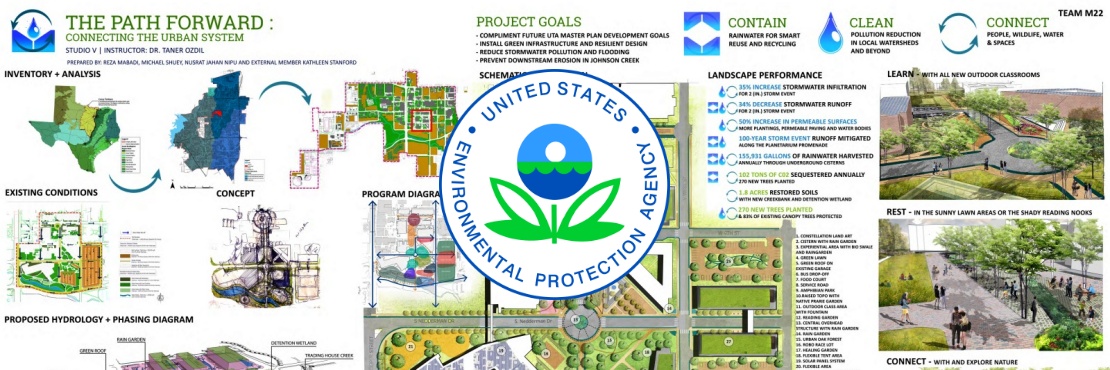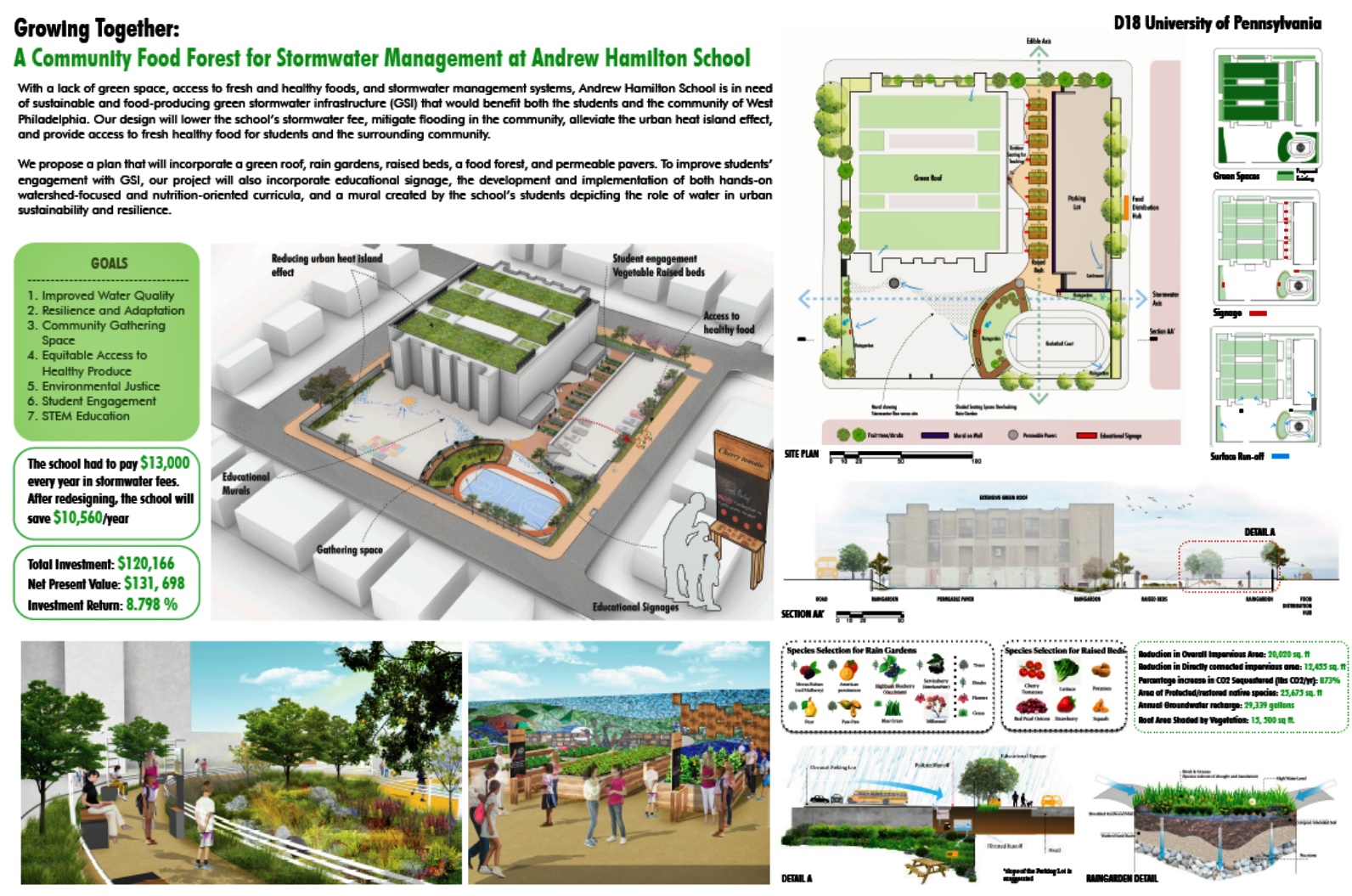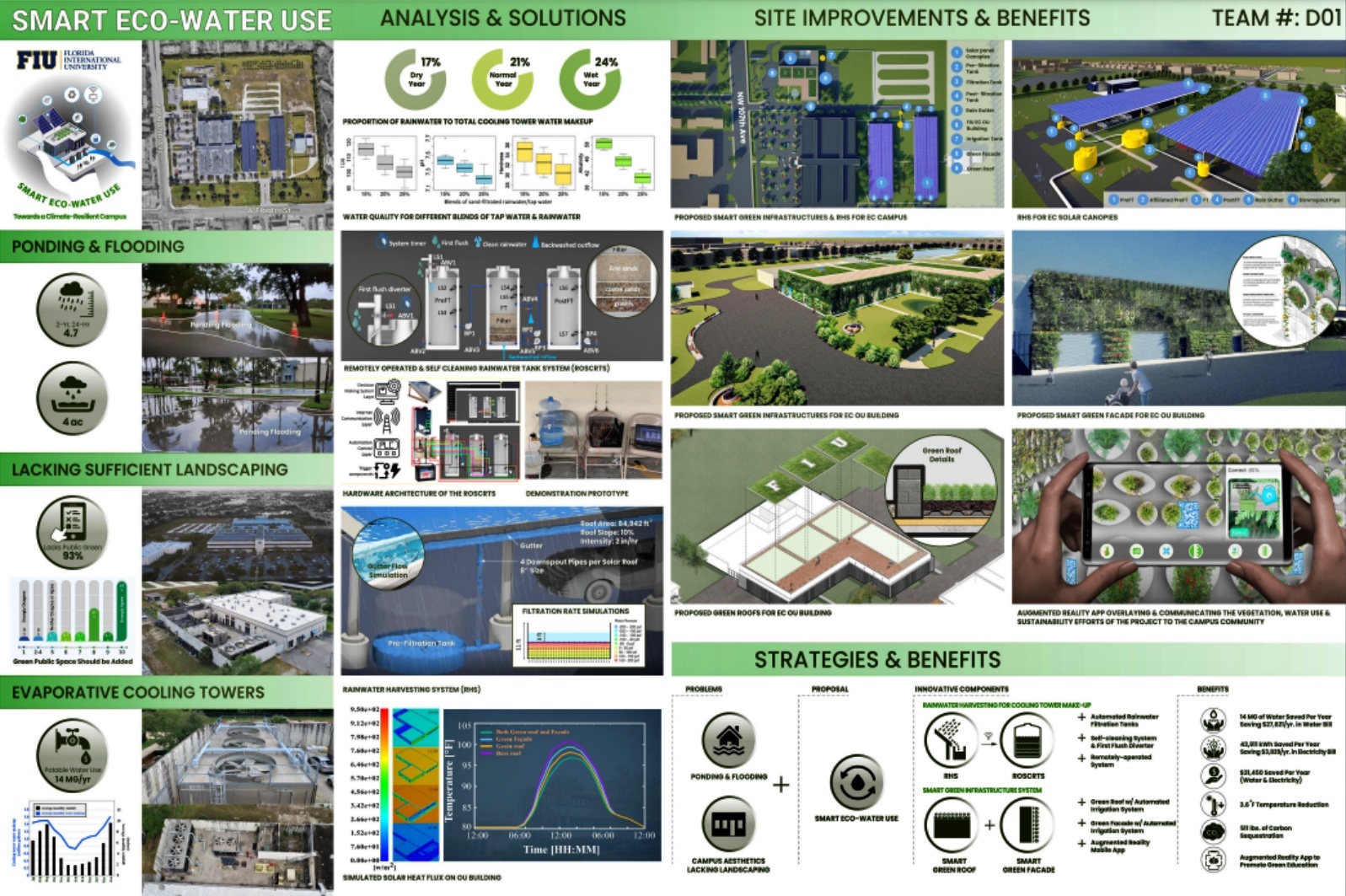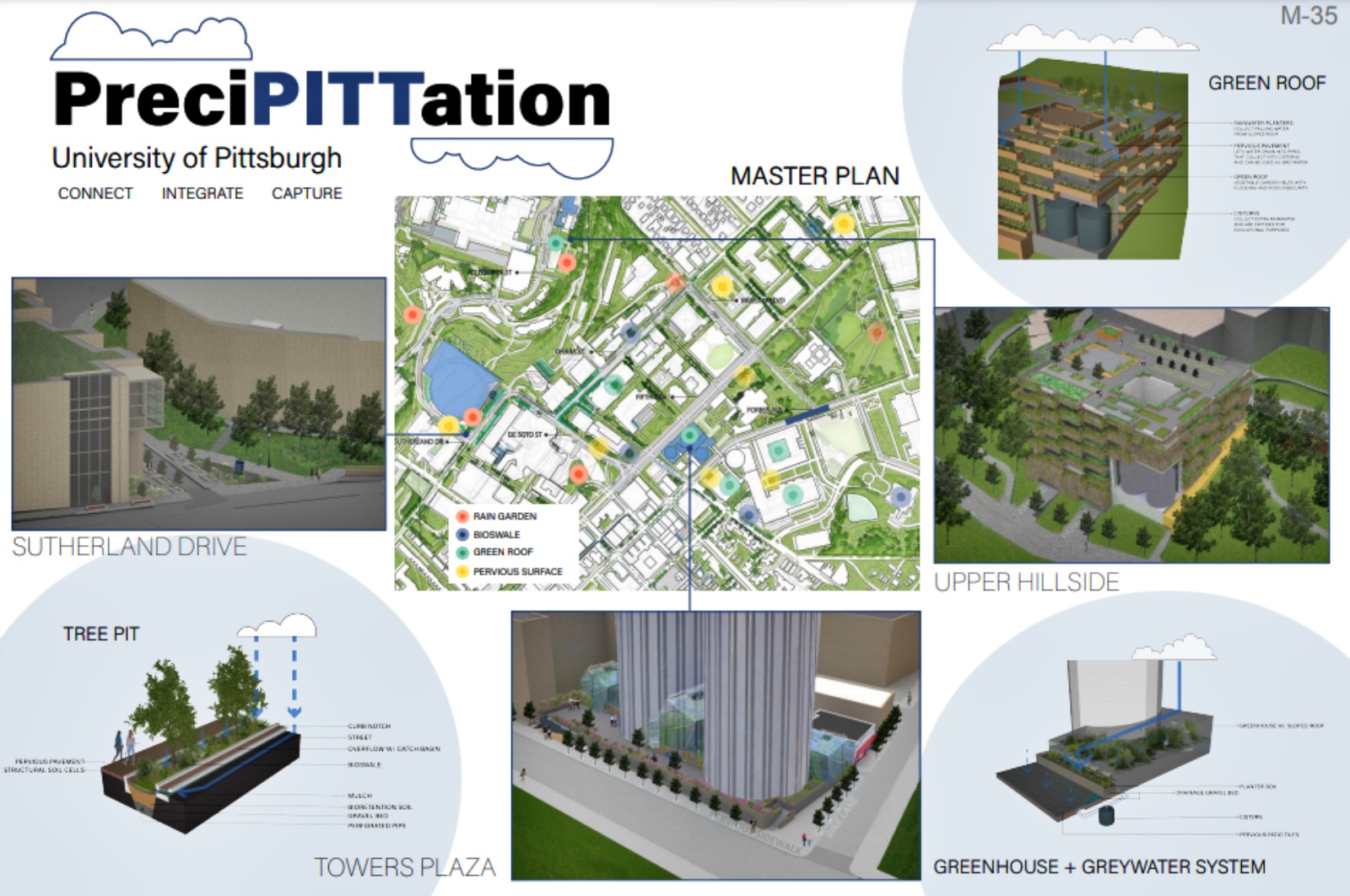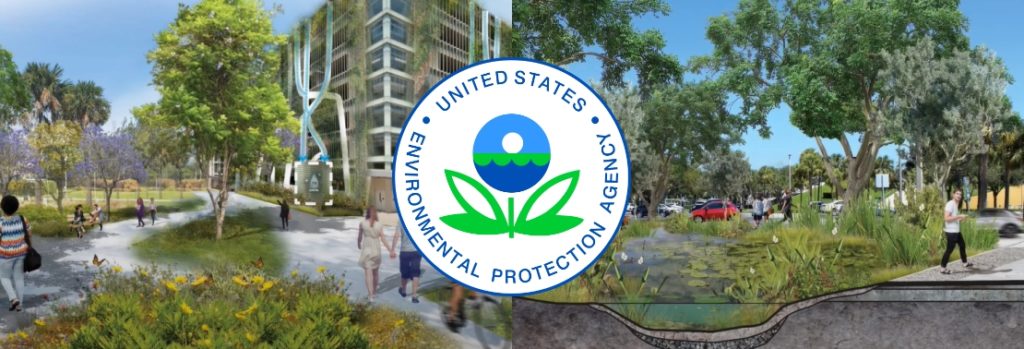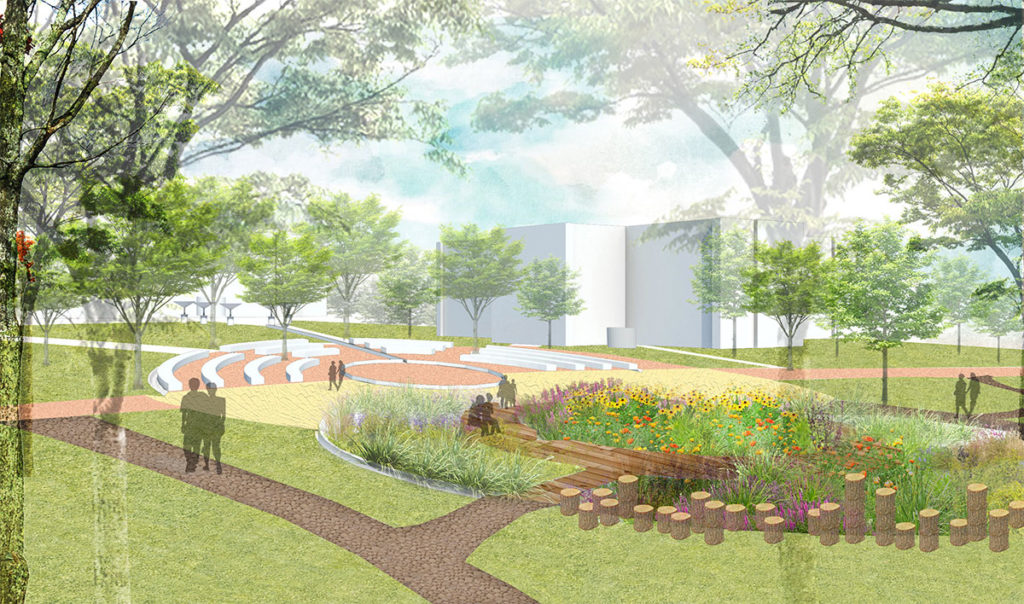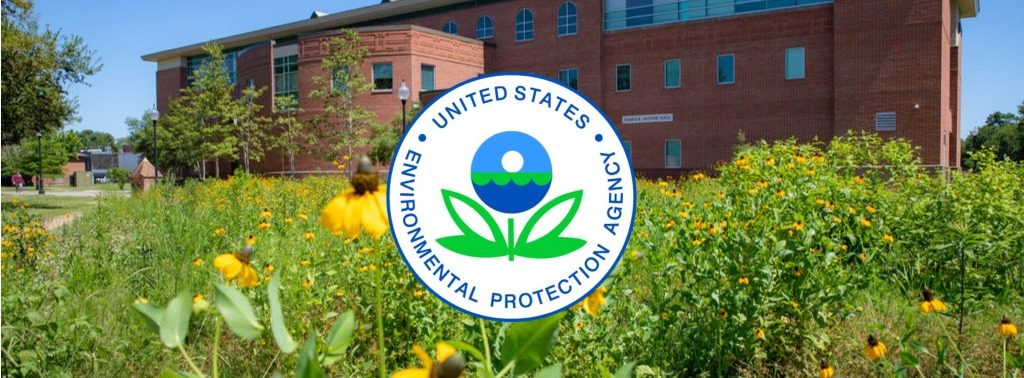Joe Hubbard or Jennah Durant of EPA.gov writes:
On April 19, 2021, EPA announced the winners and honorable mentions for the ninth annual Campus RainWorks Challenge. 57 student teams from across 26 states and 39 different academic institutions submitted green infrastructure designs that address urban stormwater pollution and showcase the environmental, economic, and social benefits of green infrastructure. The breadth of expertise and innovation in these designs demonstrates that today's students are more than capable of solving the challenges of stormwater management and protecting public health and the environment in communities everywhere. Special thanks go to the Water Environment Federation, the American Society of Civil Engineers, the American Society of Landscape Architects, and all of the students, faculty, and judges that participated in this year's challenge.
The U.S. Environmental Protection Agency (EPA) has announced the winners of its ninth annual Campus RainWorks Challenge, a national competition that engages college students in the design of on-campus green infrastructure solutions to address stormwater pollution. This year’s winning projects showcased the environmental, health, economic, and social benefits of green infrastructure.
“Innovative stormwater management design has the potential to create vibrant and dynamic school campuses to benefit students and the surrounding community…”
Radhika Fox
EPA Principal Deputy Assistant Administrator for Water
“Innovative stormwater management design has the potential to create vibrant and dynamic school campuses to benefit students and the surrounding community,” said EPA Principal Deputy Assistant Administrator for Water Radhika Fox. “This engaging competition encourages problem-solving through design while introducing students to opportunities to join the next generation of clean water professionals. Congratulations to this year’s winners and all of the teams that competed!”
Stormwater runoff is a significant source of water pollution and remains a complex environmental challenge for communities across the country. EPA’s Campus RainWorks Challenge asks students and faculty members at colleges and universities to apply green infrastructure design principles, foster interdisciplinary collaboration, and increase the use of green infrastructure on the nation’s college campuses. Since 2012 more than 750 teams have participated in the challenge.
In this year’s challenge, EPA invited student teams to compete in two design categories: the Master Plan category, which examines how green infrastructure can be broadly integrated across campus, and the Demonstration Project category, which focuses on how green infrastructure can address stormwater pollution at a specific site on campus or local elementary, junior high, or high schools.
This year’s winners are:
University of Pennsylvania (1st Place Demonstration Project Category) – The team’s entry, titled “Growing Together,” redesigned the Andrew Hamilton Elementary School campus in West Philadelphia to incorporate a variety of green infrastructure practices, as well as raised garden beds and a food forest. Extensive stakeholder engagement within the community led to a realistic design that would manage stormwater runoff on-site, connect students to their watershed, and help address food insecurity. Andrew Hamilton Elementary supported the team’s vision and will move forward with project construction this spring. Watch the team’s video about their design: https://youtu.be/PuJvzYdxnAg
University of Texas at Arlington (1st Place Master Plan Category) – Titled “The Path Forward: Contain, Clean, and Connect,” this entry redesigned the university’s master plan to strategically incorporate green infrastructure practices at key locations, including transportation corridors and local water bodies. The team took a holistic design approach that would not only protect public health and water quality, but promote resilience, create new wildlife habitat, and create new recreational amenities for students and educators. Watch the team’s video about their project: https://www.youtube.com/watch?v=iUgd1lE-m-k
Florida International University (2nd Place Demonstration Project Category) – In their entry titled “Smart Eco-Water Use: Towards a Climate Resilient Campus!” this team targeted water efficiency issues at the campus engineering center. Green infrastructure practices in this design would reduce heat island effects, harvest rainwater, and prevent localized flooding. Watch the team’s video about their design: https://youtu.be/7NW6h0IK8p8 – (Shout out to my Alma Mater!)
University of Pittsburgh (2nd Place Master Plan Category) – The “Team PreciPITTation” entry integrated multiple green infrastructure practices into a master plan design that focused on the elimination of combined sewer overflows. Students engaged with internal and external stakeholders to create a design that would manage stormwater runoff and reduce flooding while creating safe, multifunctional spaces accessible to students and the greater Pittsburgh community. Watch the team’s video about their project: https://youtu.be/2E0loZa490Q
EPA is also pleased to recognize the University of Cincinnati, Purdue University, and the University of Tennessee at Chattanooga for honorable mentions in the Demonstration Project category, and the University of Cincinnati, the University of Texas at Arlington, and the University of Oklahoma for honorable mentions in the Master Plan category.
Background
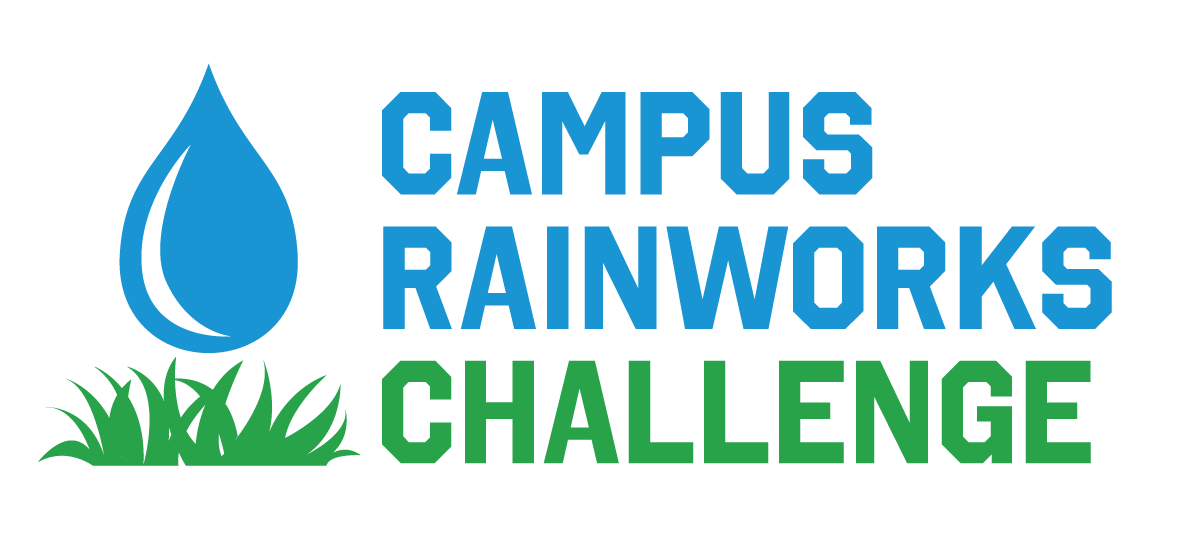 Green infrastructure tools and techniques for stormwater management include green roofs, permeable materials, alternative designs for streets and buildings, trees, habitat conservation, rain gardens, and rain harvesting systems. Utilizing these tools decreases pollution to local waterways by treating rain where it falls and keeping polluted stormwater from entering sewer systems. Communities are increasingly using innovative green infrastructure to supplement “gray” infrastructure such as pipes, filters, and ponds. Green infrastructure reduces water pollution while increasing economic activity and neighborhood revitalization, job creation, energy savings, and open space.
Green infrastructure tools and techniques for stormwater management include green roofs, permeable materials, alternative designs for streets and buildings, trees, habitat conservation, rain gardens, and rain harvesting systems. Utilizing these tools decreases pollution to local waterways by treating rain where it falls and keeping polluted stormwater from entering sewer systems. Communities are increasingly using innovative green infrastructure to supplement “gray” infrastructure such as pipes, filters, and ponds. Green infrastructure reduces water pollution while increasing economic activity and neighborhood revitalization, job creation, energy savings, and open space.
First place teams will receive a $7,000 student prize to be split among team members and a $3,000 faculty prize to support green infrastructure research and training. Second place teams will receive a $3,500 student prize and a $1,500 faculty prize. Since 2012 more than 750 teams have participated in the challenge.
For more information: https://www.epa.gov/green-infrastructure/campus-rainworks-challenge-0
Read more: EPA Selects University of Texas at Arlington as Winner of 9th Annual Campus RainWorks Challenge
 Greenroofs.comConnecting the Planet + Living Architecture
Greenroofs.comConnecting the Planet + Living Architecture
